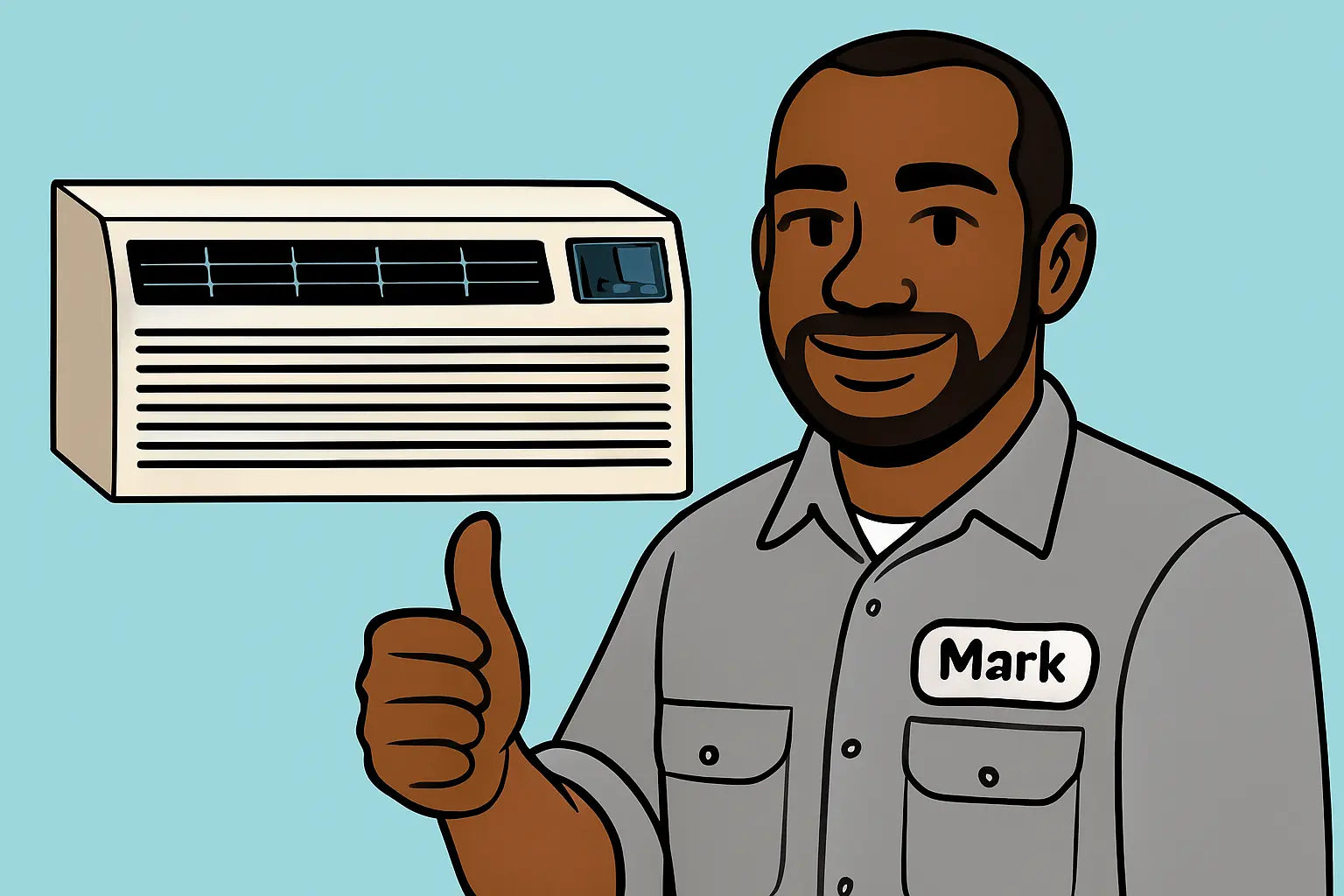Intro from Mark
Hey, Mark here. You ever have one of those moments when your PTAC starts flashing numbers and beeping like it’s trying to contact aliens? Relax—it’s not haunted. Those codes are just your Amana’s way of saying, “Hey buddy, I’ve got a problem.” Today, I’ll break down what those codes mean, how to fix the easy stuff, and when it’s time to wave the white flag and call in a pro.
Why Error Codes Exist (And Why You Should Pay Attention)
PTAC units have built-in diagnostics that help you pinpoint problems faster than old-school guesswork. Ignoring them is like ignoring your car’s check engine light—it’s just going to cost you more later. For a broader take on why appliance diagnostics matter, Consumer Reports has a great guide.
Common Amana PTAC Error Codes and Fixes
E1 – Indoor Air Thermistor Open or Shorted
Your unit thinks the indoor temperature sensor is busted or disconnected. This can be caused by a loose wire, bad sensor, or corrosion.
Fix: Check wiring connections, replace sensor if damaged. If you’re not sure how to test a thermistor, The Engineering Mindset explains the basics here.
E2 – Indoor Coil Thermistor Open or Shorted
This one’s about the coil sensor. When it’s faulty, your PTAC can’t regulate temp correctly.
Fix: Inspect coil for damage, replace the thermistor if needed.
E3 – Outdoor Air Thermistor Open or Shorted
Same story, but on the outdoor side.
Fix: Check wiring and sensor; replace if readings are off.
E4 – EEPROM Checksum Error
Your unit’s control board had a brain fart. This usually means corrupted software or a failing board.
Fix: Try resetting power. If error persists, control board replacement may be needed. The HVAC School podcast has a great episode on control boards and diagnostics.
P1 – Unit in Test Mode
Not really an error, but if you didn’t put it in test mode, something triggered it.
Fix: Hold the mode button for a few seconds to exit test mode.
Pro Tips for Resetting Your Amana PTAC
Sometimes, a simple reset clears temporary faults caused by power surges or brief sensor glitches. Shut off the breaker for at least 5 minutes, then power back up. If the code reappears, it’s a real issue, not a fluke.
When to Call a Professional
If you’ve checked the obvious stuff—loose wires, dirty filters, visible damage—and the code keeps coming back, it’s time for a licensed HVAC tech. They’ll have the tools to test sensors, boards, and refrigerant systems safely. For finding a qualified tech, Angi has a vetted list of HVAC pros.
Preventing Error Codes Before They Happen
-
Clean or replace filters monthly
-
Keep coils free of dust and debris
-
Check wiring connections yearly
-
Make sure your voltage supply is stable (low voltage can trigger sensor errors)
The Energy Star maintenance tips page has solid advice to keep any HVAC system running smoothly.
Wrapping Up from Mark
Your PTAC isn’t just throwing random letters and numbers—it’s sending you a distress signal. Now that you know how to decode and handle the common ones, you’re way ahead of most folks. And if you’re in the market for a new unit that plays nice and keeps you in the loop, check out the Amana Distinctions 12,000 BTU PTAC with 3.5 kW electric heat.
Need some seasonal maintenance tips for your Amana PTAC? Visit my guide: Keep It Cool (or Toasty).
Treat it right, keep it clean, and it’ll return the favor.
- Mark out! ✌️🔧







